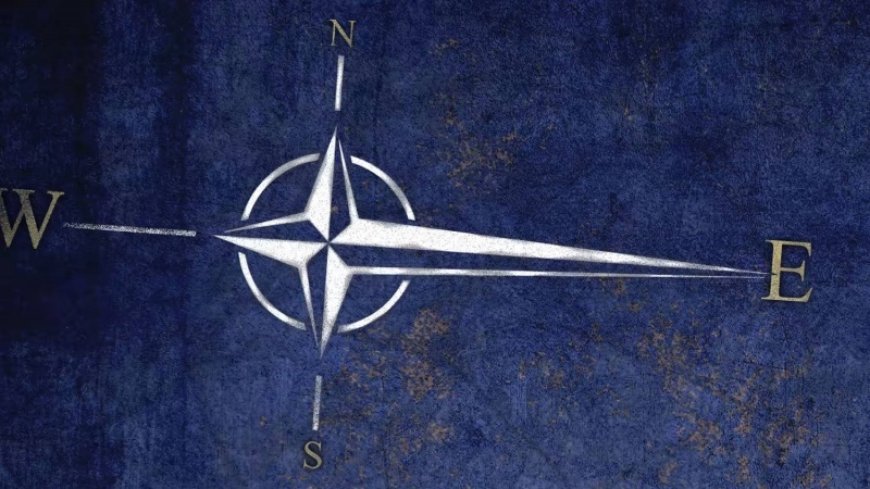The Expanding Reach of NATO and Internal Strains: A Fine Balance Between Security and Uncertainty
Tensions on NATO's eastern border as well as among its own ranks are rising as it changes. Alarmed by the union's growing sway, Russia has expressed worries about NATO's expanding presence; European members of the alliance struggle with the possible ramifications of Donald Trump's electoral comeback. These dynamics taken together point to a hazardous future for NATO negotiating a globally complicated security scene.

Tensions on NATO's eastern border as well as among its own ranks are rising as it changes. Alarmed by the union's growing sway, Russia has expressed worries about NATO's expanding presence; European members of the alliance struggle with the possible ramifications of Donald Trump's electoral comeback. These dynamics taken together point to a hazardous future for NATO negotiating a globally complicated security scene.
Russian Foreign Minister Sergey Lavrov underlined in recent comments Moscow's mounting concern about NATO's aspirations. Lavrov claims that although the alliance is now aiming for domination in the Asia-Pacific area, it is not happy with its conventional sphere of influence inside Europe. He voiced concerns about NATO's growth possibly encircling Russia on several fronts endangering its national security and disrupting the area.
Lavrov's worries reflect those of Russian President Vladimir Putin from July 2024, when he underlined the need of reducing the presence of non-regional armed forces and demanded a fresh attention on collective security in Eurasia. Moscow sees this language as a strategic intrusion on its sphere of influence, consistent with Russia's long-standing criticism of NATO's eastward growth.
Rising military cooperation in the Asia-Pacific by NATO, especially with nations like Japan and South Korea, has heightened these worries even further. Already dealing with NATO's presence in Eastern Europe, Russia sees this as an attempt to confine it into a geopolitical box, therefore stretching the boundaries of regional security.
Internal Strains Growing Inside NATO
While NATO deals with outside threats, internal conflicts—especially with relation to the security ramifications of former U.S. President Donald Trump's likely comeback to the White House—are also growing more evident. For most of last year, European NATO members were left in confusion over Trump's posture on the alliance, according to Philip Dickinson of the Atlantic Council. His past performance, characterized by doubts about NATO's significance and dedication to collective defense, has left European nations worried about the direction of their security should he be re-elected.
As Newsweek has noted, the approaching possibility of Trump's comeback generates a "imminent crisis." With Trump's generally perceived as conciliatory approach toward Russia, NATO member nations are now rushing to reassure themselves that U.S. support for Ukraine will not wane under him. European friends have been sown with questions about Trump's allegiance to Article 5, which states that an attack on one member is an attack on all.
Furthermore aggravating the domestic pressure is the widening division inside NATO on defense expenditure. Along with other European countries, Germany has advocated a rise in defense budgets as the present 2% of GDP allocation is inadequate to handle modern security issues. The internal cohesiveness of NATO runs under danger as members try to reconcile their financial commitments with the growing threat of world instability.
The Trials of Ukraine and NATO's Changing Function
The continuous crisis between Russia and Ukraine has also inspired thoughts inside NATO. Sources cited by Foreign Policy indicate that NATO is realizing the likelihood that Ukraine would not reach its military goals as it keeps suffering losses on the battlefield. Particularly since some members worry about the long-term effects of the war on European security, this recognition of Ukraine's precarious situation has left NATO searching for a fresh strategy to the fight.
Trump's re-election raises still another level of uncertainty since his foreign policy record points to a more isolationist posture. This could imply that U.S. backing for Ukraine declines, having perhaps disastrous consequences for the war and more general European stability. Trump's policies might jeopardize years of progress in combating Russian aggression and compromise NATO members' security systems, especially those on the alliance's eastern edge.
The Way Ahead: Healing Rifts and Controlling Stress
NATO's future is yet unknown as it negotiates both internal and outside demands. The alliance has to figure out how to strike a compromise between its historic emphasis on European security and growing sway in the Asia-Pacific area. It also has to deal with internal conflicts about defense expenditure and future involvement in Ukraine simultaneously.
Reiterating its dedication to collective defense will help NATO enhance its internal cohesiveness and simultaneously address member state issues over defense expenditure and security assurances. The alliance also has to take into account how Russia's concerns may be managed without sacrificing its strategic goals.
Whether NATO can remain a unified and efficient security actor or whether its internal conflicts and outside threats will compromise its cohesiveness will ultimately depend on its capacity to negotiate these difficult geopolitical issues. The issue yet remains for European allies: can they rely on the United States, especially under a possible second Trump administration, to maintain the ideals and pledges that have defined NATO for more than seven decades?













































